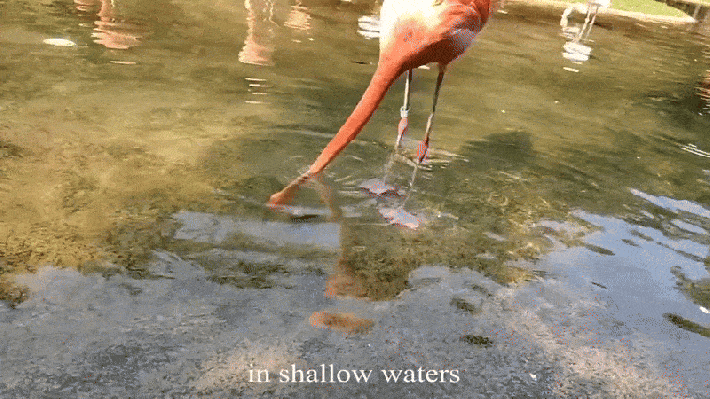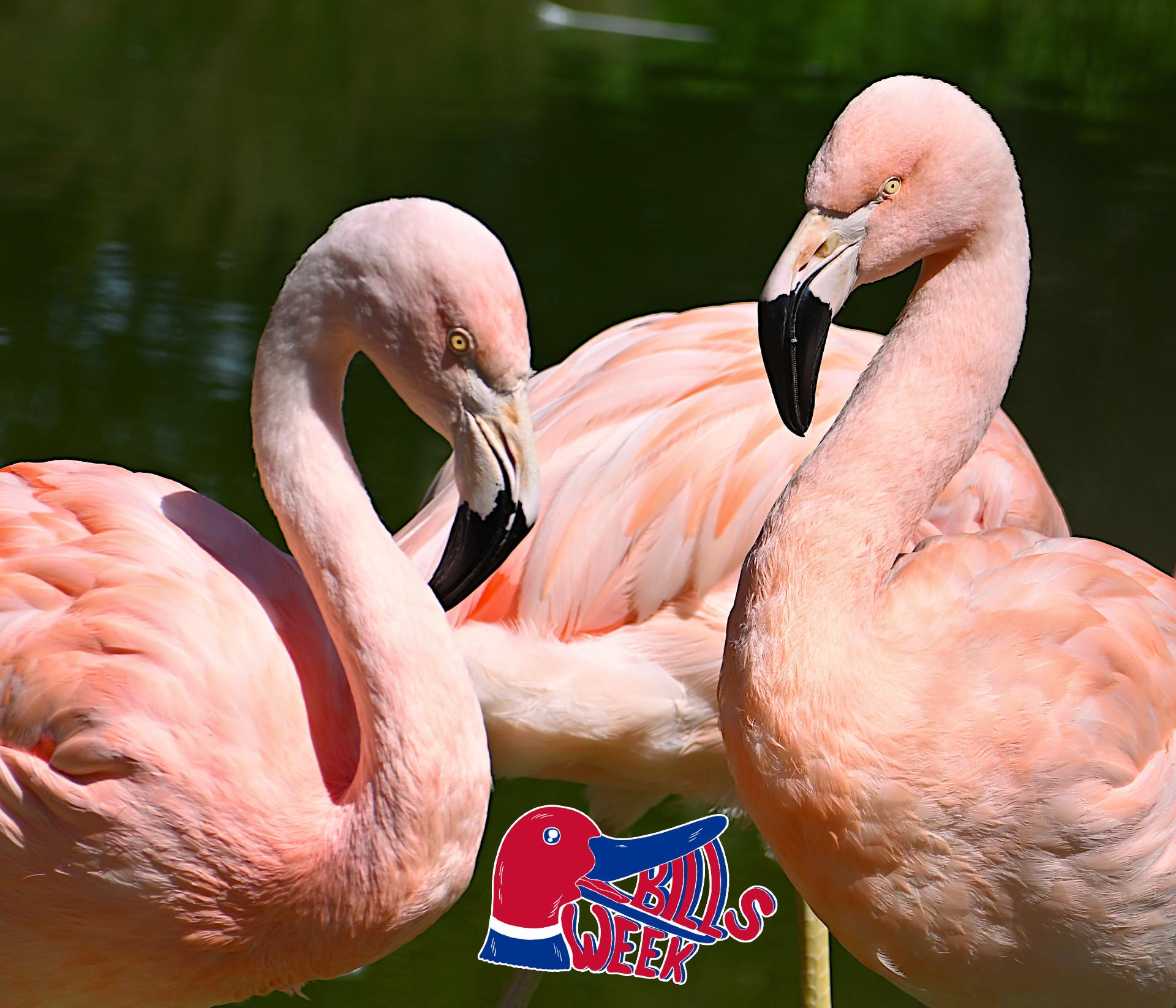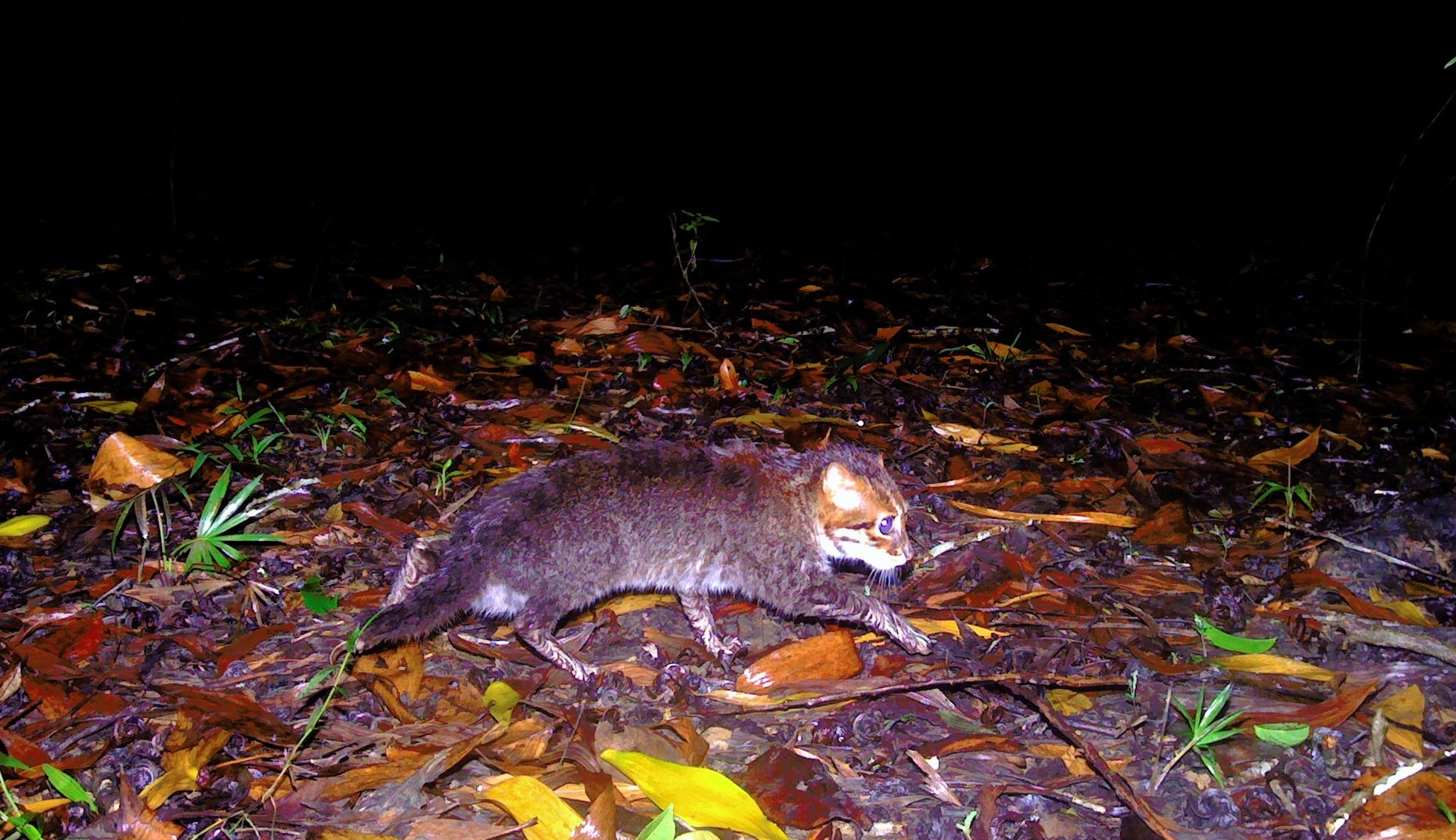In 2019, Victor Ortega Jiménez was visiting the Atlanta zoo with his family when he became mesmerized by a flock of Chilean flamingos. The flamingos were feeding, their long necks squiggled into the water and flat feet stomping in a kind of dance. Ortega Jiménez noticed the flamingo heads produced capillary waves, concentric ripples on the water's surface. "What is happening inside of the water?" he wondered.

Ortega Jiménez, a biomechanics researcher at the University of California, Berkeley, searched the scientific literature for any explanation of the fluid dynamics of this behavior—anything that might explain the movements of the water. Finding nothing, he decided to investigate the matter himself, with help from colleagues at Georgia Tech, where he was working at the time.
Their explanation, which was recently published in Proceedings of the National Academy of Sciences, solves the mystery of the birds' baffling behavior: Flamingos use their beaks and feet to create miniature, tornado-like vortices that trap their agile, fast-swimming prey. "It's not just quirky and weird that they're doing this," said Felicity Arengo, a visiting scientist at the American Museum of Natural History and flamingo specialist with the IUCN. Arengo was not involved with the research. "All the stomping, the pumping with the beak, and the movement of the head, it's all coming together to generate these flows and eddies and vortices," Arengo said.
The flamingo's feeding stance is so famously weird that it served as the subject of an essay by Stephen Jay Gould, "The Flamingo's Smile," in which Gould attempts to understand why the birds feed with upside-down heads. But despite the birds' fame, scientists knew little about how they fed, or even what they ate. "You'd have to catch the bird in the act," said Arengo. Instead, researchers looked for evidence outside of the flamingo, examining their droppings and sampling their habitat. The birds are filter feeders, straining brine shrimp and other critters through plates in their beak, and so developed a reputation as passive predators that simply slurped up whatever was floating in the water.

But Ortega Jiménez suspected something more complicated was going on. At first, he wondered if the birds were producing turbulence to distribute their prey more evenly. For six months, the researchers attempted to train the Chilean flamingos in Atlanta to feed out of clear containers, which could be filmed to reveal how the particles flowed. But "the flamingos did not cooperate," he said.
The researchers scouted out a friendlier flock at the Nashville Zoo, which exhibits Caribbean and Greater flamingos, and houses a dozen Chilean flamingos behind the scenes. The Chileans act as ambassadors, going on daily walks around the zoo. "They all get to choose whether or not they participate in the walks every day," Jake Belair, an author on the paper who previously worked at the Nashville Zoo, wrote in an email. "Some are very consistent, some prefer to stay behind more frequently." Eight of the Chilean flamingos hatched at the zoo, and Belair was a part of the team that hand-raised them from hatch.
Belair trained the flamingos to feed from a variety of different contraptions, leveling up to the clear containers. "Flamingos are notoriously skittish birds, so it took a lot of time and tiny movements in the right direction before I had a lot of success," Belair said. The zookeepers allowed all 12 flamingos to choose whether they participated in the experiment, and three flamingos, Mattie, Marty, and Cayenne opted in. Belair described flamingos as an "open book," as the birds communicate with vocalizations and body language. Mattie and Marty are a young bonded pair in their late teens, and Cayenne is a younger, single flamingo who was interested in tackling new challenges. "All three were very curious and engaging flamingos," Belair said.
In Nashville, when Ortega Jiménez finally observed Mattie, Marty, and Cayenne feeding on pulverized pellets inside clear containers, he felt like he had unlocked part of the birds' secret. It wasn't just turbulence; each time the birds jerked their beaks backward, they produced a vortex that caused the food to churn upward.
He also noticed that when the feeding flamingos "chattered" their beaks, clapping one mandible against the other, the particles traveled straight to the beak. To better understand chattering Ortega Jiménez created a 3D-printed mechanical flamingo, attaching a real beak from a flamingo that had died at a zoo to a motor. When he placed the motorized beak in a tank with a flamingo's real prey of brine shrimp, he found the vortices were stronger than the brine shrimp's swimming abilities. "They are trapped in these vortices. They cannot escape," Ortega Jiménez said.
The mechanical flamingo also helped to solve another mystery: why the birds open their beaks parallel to the flow, skimming the water, as opposed to other filter feeders like whales, which face the incoming flow to engulf as much prey as possible. It turns out that, in such a position, the L-shape of the beak generates a repeating pattern of swirling vortices that also helps to trap prey. "The whole flamingo is a filter-feeding machine," Ortega Jiménez said. "It's astounding," he added.
But the flamingo's prowess is not isolated to the beak. On another zoo visit with his family, Ortega Jiménez found himself once again entranced by their bobbing bills. His wife Sarahi, a physicist, told him to look at the birds' feet, which they stomped in a strange, splashing dance. "I was just focused on the head, and I lost the whole vision," Ortega Jiménez said. He took his wife's advice and built a mechanical flamingo foot, then filmed it stomping in water teeming with brine shrimp, copepods, and boatman bugs. As the webbed foot opened and closed, it too produced vortices that trapped even the swift copepods and bugs to deliver them to the beak.
Although Arengo has spent 30 years studying flamingos, the new paper has made the birds even cooler and smarter in her eyes. "I've always thought it was more of a passive behavior, the foraging," Arengo said. "No. They're actually working hard, using physics to make the foraging more efficient for them." There are even other shorebirds called phalaropes that feed alongside flamingos, taking advantage of all the shrimp they stir up, Arengo added. So these vortices are not only "benefiting the flamingo, but also other species that can come into this swirl of food that's being generated," she said.
Meanwhile, Ortega Jiménez hopes to unravel more of the flamingo's mysteries, such as how their bills morph from straight to L-shaped after hatching, and if they work together to hunt. He wants to look inside the bill to better understand the fluid dynamics of the tongue. He also keeps thinking about how the birds' L-shaped beaks resemble the L-shaped jaws of right whales, which are also filter feeders. "Are whales actually getting down and producing some of these vortices?" he wondered aloud. For now, he'll start with the tongue. And he'll keep visiting the zoo, where another mystery might find him.







